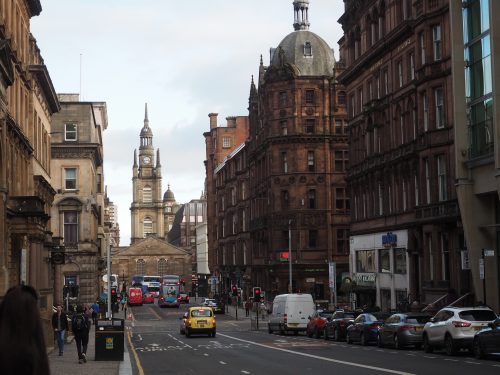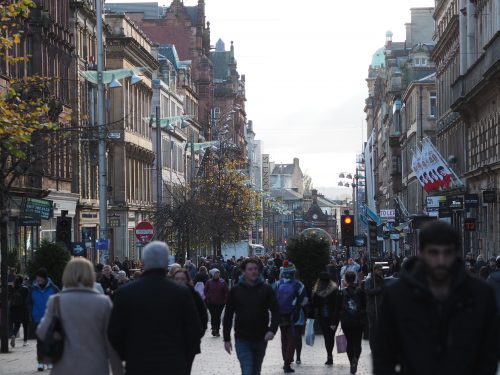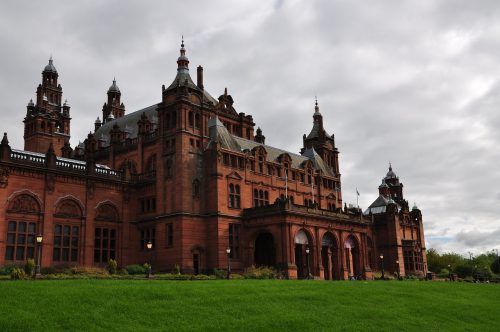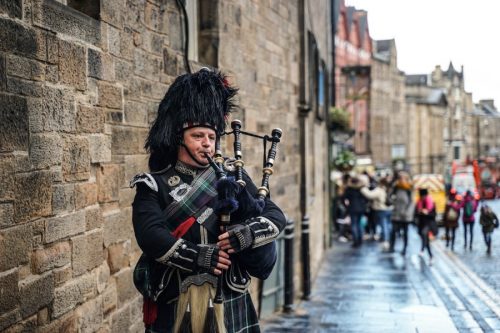A developed city where art and culture are prominent -Part One-
2020/6/19

Scotland’s largest city Glasgow is known as a city of “art and culture”. Starting with the works of Charles Rennie Mackintosh, one of the representative artists of the Art Nouveau Movement (*1), you can encounter many art pieces around the city. Just because of that you could say that this is a very fun port to walk around, but there are many more places in the vicinity such as the landscapes of the mountain ranges and the highlands, and Scotland’s capital and world heritage city Edinburgh. Glasgow is the perfect gateway to discover Scotland’s charm.
*The boat goes along the Clyde River from Glasgow to the outer port of Greenock.
*1: An art movement centered in Europe that took momentum between the end of the 19th century to the beginning of the 20th century.

Going around Glasgow by walking down Buchanan street.
When walking around Glasgow you can’t miss the beautifully stone paved Buchanan Street, a pedestrian heaven. You can enjoy window shopping while listening to the street musicians play bagpipes, or have a small break at an open doors cafe while looking at the marvelous architecture from the 19th century. Once you get to sense the active feeling of the city, it is time to go to Glasgow Cathedral where St. Mungo, the founder of the city, rests. Following a strict religious revolution, many churches were destroyed, however, this cathedral was miraculously left untouched. With its history of more than 800 years, you can feel its magnificence from the beginning.

Glasgow was once thought to be an industrial city in decline, however, about 30 years ago its reactivation as a city of art and culture was planned, making the city shine again.
The Lighthouse, the Glasgow School of Art, and the Willow Tea Rooms… we suggest you to have fun while looking for the different art pieces left by Mackintosh.

The Kelvingrove Art Gallery and Museum is one of the most visited museums in the United Kingdom, it is home to many famous paintings from Van Gogh, Monet and other well known artists.

The traditional culture of Scotland, pride of its people.
While Glasgow tends to drive the trends in Scotland, the Scottish traditions are deeply rooted in people’s everyday lifestyle. Be it in festivals, celebrations, or funerals, you can see and hear bagpipes in many events. Moreover, while in Scotland, it is very probable that you will be able to see someone wearing a kilt, the traditional Scottish skirt. The tartan pattern of these kilts has a very deep meaning, similar to family crests in Japan. The patterns that each family can use are set, but as they are lovely patterns some are also popular as souvenirs. Starting with scarfs and blankets, many gifts use these patterns.
A bagpipe player with a kilt. This prideful and gallant combination has become known as a synonym for Scotland.

There are so many different types of Tartan patterns. However, only those patterns registered by the Lord Lyon King of Arms can be called Tartan.
